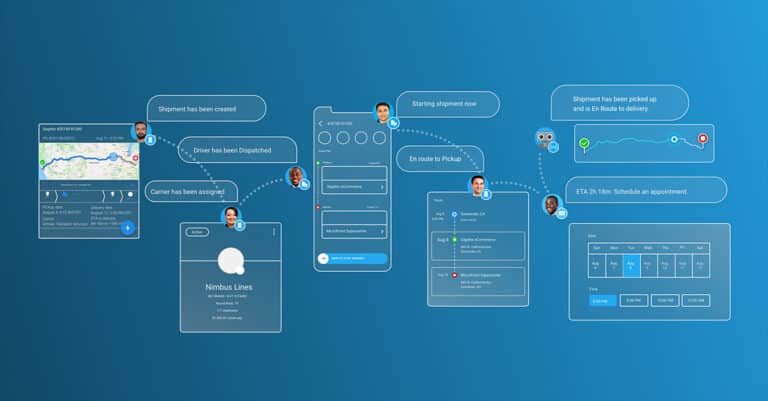The warehouse management system (WMS) has undergone significant changes in recent years. A few short years ago systems could only recognize their inventories, today’s systems can manage much more. It can manage stock levels, future demand, customer service issues, packaging and supply requirements, vendor programs, freight, and optimize operations in real-time. However, not all WMS systems in the current day are made equal. As a result, it’s critical to know what essential features a modern WMS should include.
Track and Trace
A modern WMS should be able to manage the tracking and tracing of products, personnel, and shipping commodities. Monitoring and tracing lead to the adoption of automated solutions. This shortens the time it takes to acquire, manage, and evaluate warehouse data and provides the management with a 360-degree perspective of their existing operations.
Order Streaming
To manage incoming orders, warehouses have historically employed wave-style picking. Order tickets are distributed in batches during wave picking, resulting in distinct peaks and lulls in operations and activity. Unfortunately, this involves lost time during breaks and a higher risk of picking mistakes during surges. On the other hand, today’s WMS systems should support order streaming. Order streaming slows the release of pick tickets as the day advances, allowing team members to work more efficiently and lessening the “rush” at other peak periods. Modern WMS can take this capability a notch by integrating order streaming with other new-age systems such as Transportation Management Systems (or TMS). Order Streaming capabilities, along with the TMS information and insights, can ensure that the capacity surprises or peaks are minimized. It also helps in the effective workforce planning for the warehouses.
Integration across the whole organization
Modern WMS solutions require enterprise-wide integration. If the system is not connected to all departments, issues can range from incoming freight compliance processes to the end customer support. A modern WMS will help track down and correct problems such as erroneous or incomplete purchase orders. On the other hand, a modern WMS should have the power and scalability to be used throughout the organization.
As e-commerce continues to flourish, customers want an omnichannel shopping experience. As a result, today’s WMS systems must be able to connect with various areas of the supply chain via Electronic Data Exchange (EDI) and Application Programming Interface (API). This will cut down on wait times and the need for manual updations and allow customers to acquire the information they want, when they want them, and at a price they want.
Deployment and Use of Mobile Devices
Mobile solutions deployment is another element of current WMS solutions. Mobile technology such as wearables and voice-command prompts for selection should be integrated into modern-day WMS. This encourages managers and team members to collaborate on warehouse floors and in the field. In addition, real-time data capture, analysis, and application in today’s WMS solutions will improve the warehouse’s production and efficiency. This data collected in real-time from the field can be vital for capturing and resolving overall supply chain issues when integrated and shared with other systems such as TMS.
Supply Chain Optimization
WMS automates the warehouse operations from the earliest inputs to the final delivery, increasing efficiency and lowering expenses. The use of a warehouse management system (WMS) may be expanded to include a larger supply chain.
By gaining information from other systems like TMS, a modern WMS can minimize non-productive activities. This will help warehouse workers to accomplish speedy and precise shipments. Such an increase in efficiency will benefit both internal and external partners, allowing them to better their operations. Data sharing amongst the partner is also possible with modern WMS. Improved data, for example, may lower business disruption risks, increase dependability, and benefit shippers, suppliers, and consumers. The company’s ERP system, a TMS (transportation management system), or a client can all benefit from such information sharing.
Modern WMS also provides options for cloud operations. Such on-cloud WMS are leaner, cheaper, and quicker to implement. They also have a more affordable ownership cost upfront because there is no need for expensive hardware, software, or in-house IT engineers.
WMS allows an organization to deliver items to consumers faster while helping partners with a better plan.
If you are looking for great Collaborative TMS solutions, Turvo is the right partner. Turvo provides the world’s leading Collaborative TMS application designed for the supply chain. Turvo connects people and organizations, allowing shippers, logistics providers, and carriers to unite their supply chains, deliver outstanding customer experiences, collaborate in real-time, and accelerate growth. The technology unifies all systems, internal and external, providing one end-to-end solution to execute all operations and analytics while eliminating redundant manual tasks and automating business processes. Turvo’s customers include some of the world’s most considerable Fortune 500 logistics service providers, shippers, and freight brokers. Turvo is based in the San Francisco Bay Area with offices in Dallas, Texas, and Hyderabad, India.









